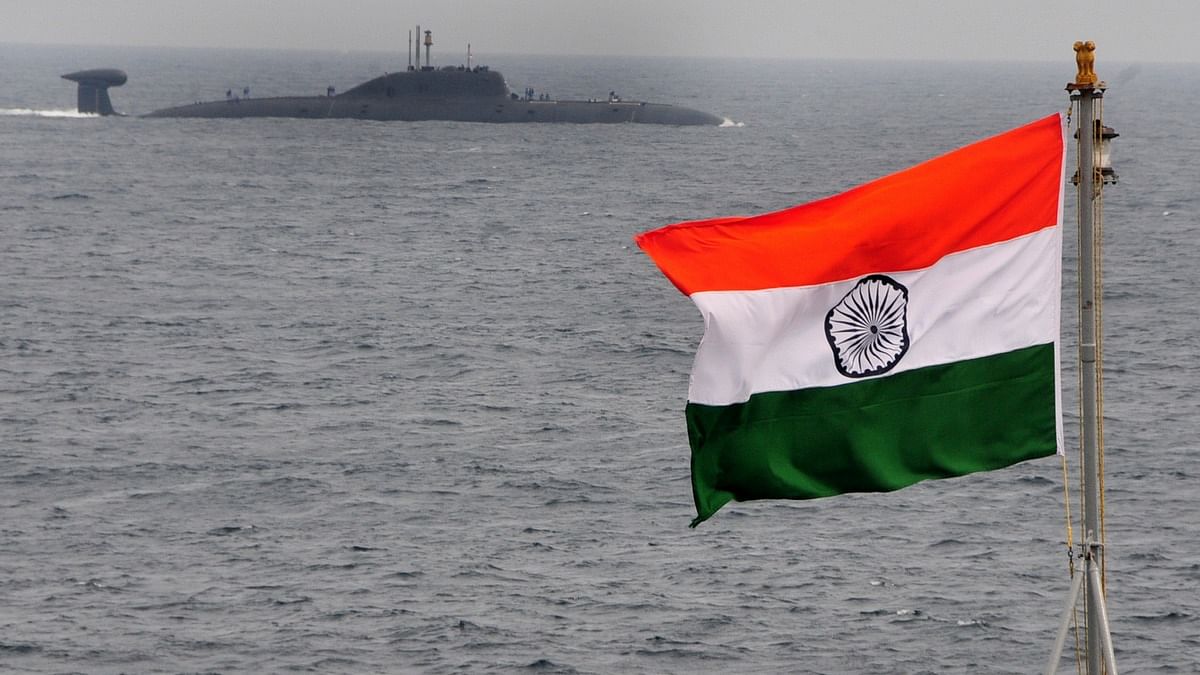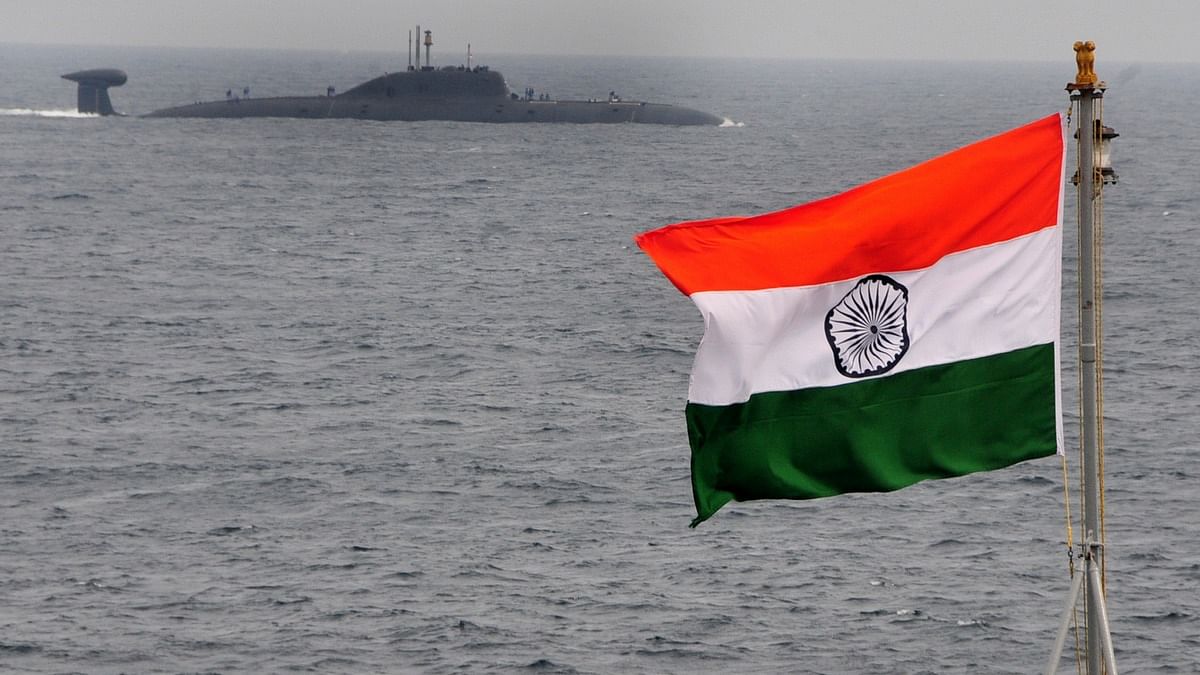Zarvan
ELITE MEMBER

- Joined
- Apr 28, 2011
- Messages
- 54,470
- Reaction score
- 87
- Country
- Location
Tale of two ships – How Delhi is asserting Indianness of the Indian Ocean to China
A US Navy ship docked in an Indian port for the first time. And a Chinese ship couldn’t in Sri Lanka. New Delhi is finally pulling strings.

JYOTI MALHOTRA
9 August, 2022 12:48 pm IST

Text Size: A- A+
History is colliding with the present this week as the tales of two ships show the incredible change in India’s place in the world in just half a century.
US and USSR enter Indian Ocean
On 9 August 1971, 51 years ago, India and the Soviet Union signed the Treaty of Friendship and Cooperation, on the eve of the war with Pakistan. The treaty was one element, albeit a crucial one, in then-Prime Minister Indira Gandhi’s network of ambitious decisions, building not just a strategic tie with the Soviet Union, but also the case for Bangladesh in key capitals abroad – especially as the Pakistan Army unleashed a genocide on its own citizens in the East. Gandhi was also preparing India’s own armed forces for the war that would break up Pakistan and forever bury the two-nation theory.In the war that followed the treaty, the ships of both superpowers, the US and the Soviet Union, would play a starring role. Then US President Richard Nixon, goaded by his ambitious Secretary of State Henry Kissinger, would order the Seventh Fleet, which included the USS Enterprise nuclear aircraft carrier as well as 70 fighters and bombers, into the Bay of Bengal to scare off the Soviets from supporting India. In turn, the Soviets would call the American bluff, its Pacific Fleet entering the Indian Ocean on 5 December 1971, two days after the India-Pakistan war began. By 7 December, the Soviet ships had reached 500 nautical miles east of Ceylon, with its submarines occasionally breaking the surface of the water.
The Americans hoped at the time that China would also move a ship or two “to complicate India’s operations” in the war, but the Chinese didn’t bite. Beijing knew that if its ships moved to support Pakistan, then its former Communist friend and ally – Moscow and Beijing had had a major falling out by 1969 – was sure to undertake a distraction or two in Xinjiang or somewhere else that would hurt.
Fifty-one years on, as India and Russia mark the anniversary of their Treaty, the world’s medium and big powers have made completely new friends and blocked old ones. Russia and China have dropped their old animosity and decided to make up for lost time. India and the US are coming closer and closer. And China is a major power, flaunting its powerful maritime presence across the oceans, building naval bases in Pakistan and Djibouti and controlling routes of navigation in the South China Sea.
One ship docks, one isn’t allowed to
For the first time in recent memory, India has decided to exercise its muscle in the region against a third country, while persuading the neighbouring country to fall in line. India is asserting its primacy in the Indian Ocean, or at least in the parts that fall within the exclusive zone of South Asia.So when a Chinese research vessel involved in space and satellite tracking wanted to dock at the Hambantota port in Sri Lanka on 11 August, which was built by a Chinese company a decade ago, India expressed its concerns to Colombo. The Sri Lankans demurred at the beginning, then saw the light. No one has done more for Sri Lanka in recent months to avert an economic collapse than India.
Within days, Colombo changed its mind. Late last week it told the Chinese that the visit of the Yuan Wang 5, which set sail from the Chinese port of Jiangyin last month, should be indefinitely postponed.
Sri Lankan PM Ranil Wickremesinghe has also assured parliament that the ship would not visit as scheduled.
Perhaps, India felt more confident with exercising its muscle because it is part of the Quad, which includes the US, Australia and Japan. Perhaps, India feels more comfortable with the US on its side, even though it maintains a strong, albeit increasingly transactional relationship with the Russians, via the purchase of cheap oil and defence equipment.
Certainly, the world order is shifting again. This weekend, a US Navy cargo ship docked in the L&T shipyard in Kattupalli, Chennai, for “repairs and maintenance”. This is the first time ever that an American ship has docked in an Indian port.
Certainly, too, this is no ordinary “repair and maintenance” job of the USS Charles Drew. Defence secretary Ajay Kumar and Navy vice-chief, vice-admiral S. N. Ghormade, who were present on the occasion, underlined India’s readiness for “deeper engagements” with the US Navy.
It’s clear the US has decided to ignore India’s growing purchases of Russian oil since the Ukrainian crisis; the Americans believe that New Delhi is pulling away from Moscow for several reasons, including a growing suspicion over the Russia-China relationship (like “teeth and lips” as the Chinese would say). Indian officials privately snigger about the fact that it is taking Russian President Vladimir Putin “so long” to tame Ukraine.
Indianness of the Indian Ocean
So here is how the chips are falling this week: India has welcomed a US ship to its port, while it continues to spend large amounts of money buying Russian oil, and is at the same time telling the Chinese, via Sri Lanka, that it will not hesitate to assert the “Indianness” of the Indian Ocean.Needless to add, Beijing is furious. It is not used to being told off, especially by tiny states such as Sri Lanka. The Chinese foreign ministry Monday declared India’s opposition to its ship visit to Hambantota as “senseless” and said it should not “disturb normal exchanges” between two nations.
Some would say that India’s actions constitute unacceptable interference in the sovereignty of another nation – and under normal circumstances, there may be a sliver of truth in that statement.
But these are not normal circumstances. While India was doing all it could to help ease Sri Lanka’s economic emergency and reach out to all sides on the political front, China took its time to even send the first tranche of aid. Worse, China rejected a Sri Lankan request in February to reschedule the $5 billion Colombo owes Beijing; instead, China offered refinancing, a new $1 billion loan to repay part of Sri Lanka’s debt.
China’s ambassador to Sri Lanka, Qi Zhenhong, insensitively pointed out, “Countries that colonised Sri Lanka have a greater obligation to help at this juncture”. Only in May did China agree to work with the International Monetary Fund (IMF) to ensure that it “positively” considers Sri Lanka’s suggestions.
Fifty years on, as one ship docks and another is refused permission, the Indian Ocean is once again at the centre of the shifting global order.
The author is a consulting editor. She tweets @jomalhotra. Views are personal.
Recommended Content by theprint.in

Tale of two ships – How Delhi is asserting Indianness of the Indian Ocean to China
A US Navy ship docked in an Indian port for the first time. And a Chinese ship couldn’t in Sri Lanka. New Delhi is finally pulling strings.
 theprint.in
theprint.in








